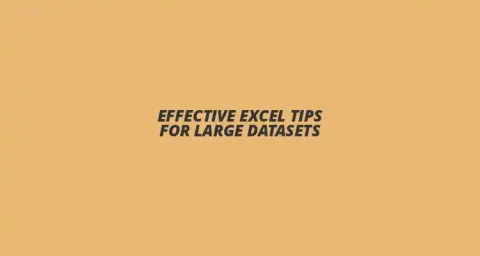
- Tips & Tricks
- Svetlana Cheusheva
Did you know that nearly 80% of data analysis time is spent cleaning data? This often overlooked task is crucial for reliable insights and effective decision-making.
Understanding the advantages and common obstacles associated with data cleaning can help you navigate this essential process effectively. Data cleaning not only improves data quality but also enhances overall efficiency in your analysis. Many Excel users encounter challenges such as inconsistent formats, which can be addressed with proper techniques outlined in our post on effective data cleaning practices.
Data cleaning is a crucial step in working with Excel that often goes unnoticed. It involves identifying and correcting inaccuracies in your data, ensuring that the information you rely on is accurate and reliable. At Sheet Nerds, I emphasize that without proper data cleaning, your analysis can lead to false conclusions, misinformed decisions, and wasted time.
When we think about data analysis, we tend to focus on the analytical techniques and tools. However, data cleaning serves as the foundation of any successful analysis. It helps in making sense of the data by providing a clear picture and allowing for meaningful insights to be drawn. Remember, clean data is the stepping stone to effective data-driven decisions!
Cleaning your data is not just a one-time task; it’s an ongoing process. It’s essential because it enhances the quality of your data, making it easier to manipulate and analyze. With clean data, you can trust your findings and confidently share them with others.
By investing time in data cleaning, you can improve accuracy, increase efficiency, and enhance the overall value of your Excel work. This can lead to better reporting and ultimately, better outcomes for your project or business. The importance of this process cannot be overstated!
Although data cleaning is vital, it often comes with its own set of challenges. Many Excel users struggle with inconsistencies in data formats, duplicates, and missing values. These issues can significantly impact the quality of your analysis if not addressed properly.
Another common challenge is identifying errors or typos within large datasets, which can take considerable time and effort to correct. Luckily, as a passionate advocate for Excel, I can guide you through these hurdles and offer practical solutions to overcome them! For a comprehensive look at common data cleaning methods, check out our article on Excel data validation techniques.
Now that we understand the importance of data cleaning, let’s dive into some essential techniques that every Excel user should know. These methods will help you maintain the cleanliness and integrity of your data, making it easier to analyze and derive insights.
From removing duplicates to standardizing formats, these techniques can significantly streamline your workflow. By applying these strategies, you’ll not only save time but also improve the quality of your reports and analyses at Sheet Nerds!
Did you know? Regularly using Excel's Data Validation feature can help prevent data entry errors before they occur. By setting restrictions on what data can be entered (like dates or specific text formats), you can maintain cleaner datasets from the start, saving you time on cleaning later!
As we wrap up our journey through data cleaning in Excel, it’s important to remember the key techniques that can significantly improve your data quality. From removing duplicates to standardizing formats, these steps are essential for ensuring your data is clean and ready for analysis. At Sheet Nerds, I've witnessed how effective data cleaning transforms chaotic spreadsheets into organized, reliable data sources!
Here’s a quick recap of the techniques we've explored:
Once you've cleaned your data, the next step is maintaining it. Regular data cleaning is vital to ensure you keep your spreadsheets in top shape. If you develop a routine for checking your data, you’ll avoid larger problems down the road!
Here are some best practices to follow:
By applying these practices, you’ll not only maintain the integrity of your data but also enhance your overall productivity. Consistency is key, and with a little effort, it becomes second nature!
As you dive deeper into the world of data cleaning, you might have some questions. Understanding common queries can help you navigate challenges more effectively. Here are a few I often encounter:
These questions are a great starting point and reflect the curiosity many Excel users share. If you have more queries, feel free to reach out through Sheet Nerds for personalized guidance!
To make your data cleaning process easier, I've put together an interactive checklist. This will help you ensure that you cover all necessary steps each time you clean your data. Here’s a simplified version:
Having a checklist can be a game-changer in streamlining your cleaning process. It keeps you on track and ensures that no step is overlooked!
Now that you have the tools and knowledge, it’s time to put them into action! Cleaning your data doesn’t have to be overwhelming. You can start with small steps and gradually build up your skills and confidence in Excel!
Here’s how to kickstart your data cleaning journey:
By taking these steps, you’ll not only improve your own Excel skills but also potentially assist others in their learning journeys!
For those eager to dive deeper into data cleaning, there are numerous resources available! At Sheet Nerds, I have curated a variety of articles and tutorials that cater to users at all levels. From beginner tips to advanced techniques, you’ll find something that suits your needs.
Some great resources include:
Embrace your learning journey and remember, data cleaning is an ongoing process! With practice and the right resources, you’ll become a skilled Excel user in no time!
Here is a quick recap of the important points discussed in the article:
